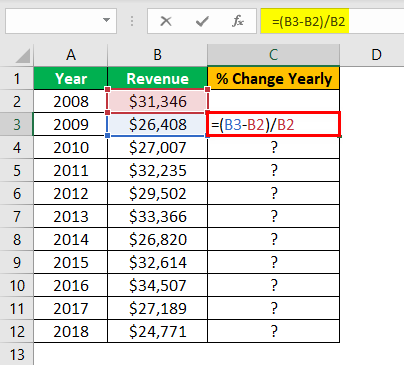Circular Reference in Excel: What Is It?

A circular reference in Excel occurs when a formula refers back to its own cell, either directly or indirectly, creating a loop. This can lead to calculation errors and unpredictable results in your spreadsheet. Understanding circular references is vital for anyone working with Excel formulas, as they can either be useful tools or problematic issues depending on the context. In this blog, we'll delve into what circular references are, how they happen, and how to manage them effectively.
What Is a Circular Reference?
A circular reference happens when a formula attempts to calculate itself as part of its own calculation. Here are two main types:
- Direct Circular Reference: This is when a cell refers directly to itself. For example, if A1 contains the formula “=A1+1”, Excel is instructed to use the value in A1 to calculate A1, which results in an endless loop.
- Indirect Circular Reference: This occurs when multiple cells are involved in a loop where the calculation path eventually returns to the original cell. An example would be A1 containing “=B1”, B1 containing “=C1”, and C1 containing “=A1”.
How Circular References Work in Excel
When Excel detects a circular reference, it does the following:
- Displays a warning message informing the user of the circular reference.
- Allows the user to decide how to proceed with the calculation:
- Iterative calculation: Excel will recalculate the formula a set number of times or until a change threshold is reached.
- Disable circular references: Excel will not update the cell with the circular reference.
Why Use Circular References?
Circular references aren’t always problematic; here are some cases where they are intentionally used:
- Iterative Calculations: In scenarios where a calculation needs to converge, like finding a root or an equilibrium, circular references can be useful.
- Updating Values: For instance, in financial models where current period calculations depend on the previous period’s values which need updating.
⚠️ Note: Even when used intentionally, circular references can lead to performance issues if not set up correctly.
How to Identify Circular References
Excel provides several methods to detect and locate circular references:
- Error Checking: Excel’s built-in error checking tool can highlight cells involved in circular references.
- Status Bar: The Excel status bar at the bottom might show the words “Circular References” along with the cell address where the circular reference was detected.
Managing Circular References
Here are strategies for handling circular references in Excel:
1. Removal
- Identify and remove or correct the formula causing the circular reference.
2. Setting Up Iterative Calculations
If you decide to keep the circular reference for iterative calculations, follow these steps:
- Go to File > Options > Formulas.
- Under Calculation options, check the box for Enable iterative calculation.
- Set the Maximum Iterations to a suitable number for your model.
- Adjust the Maximum Change to define the precision level for the calculation.
Best Practices for Avoiding Circular References
- Formula Validation: Always review your formulas to ensure they do not refer to their own cells or create loops with other cells.
- Use Helper Columns or Cells: Sometimes, breaking down complex formulas into intermediate calculations can prevent circular references.
- Understand Your Model: A clear understanding of your data flow can prevent unintentional circular references.
🔍 Note: Always validate your data models with someone else to catch errors you might have missed.
The complexities of circular references in Excel can be both a tool and a trap. They provide unique methods for solving certain types of calculations, particularly those involving iterative processes or dynamic updates. However, without careful management, they can lead to computational errors or significantly slow down your spreadsheet performance. By understanding what circular references are, how they work, and how to control them, you can use Excel more effectively, ensuring your spreadsheets perform reliably and accurately. Remember, when working with circular references, setting up iterative calculations with appropriate limits can harness their potential without the pitfalls of unintended loops.
What happens if I ignore a circular reference?
+Ignoring a circular reference will prevent Excel from completing its calculations accurately. It might show an error or use the last calculated values without updating, leading to potential inaccuracies in your spreadsheet.
Can circular references ever be beneficial?
+Yes, in specific cases like iterative calculations where you need to find a solution through convergence or in dynamic models where values update based on changing conditions.
How do I find all circular references in a large spreadsheet?
+Use Excel’s error checking tool by going to the Formulas tab, then click on “Error Checking” > “Circular References”. This will highlight and list all cells involved in circular references.
What’s the risk of leaving circular references enabled?
+Enabling circular references can slow down your spreadsheet and potentially lead to incorrect or unreliable results if not set up properly. It’s a tool that requires careful management.
Can I turn off circular references without changing my formulas?
+Yes, by navigating to File > Options > Formulas, you can turn off Enable iterative calculation, which will disable circular references without altering your formulas directly.



